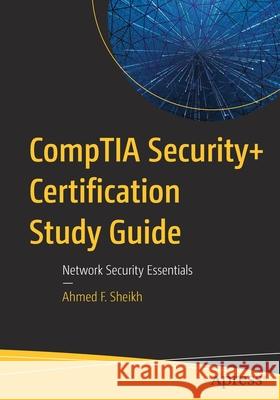Comptia Security+ Certification Study Guide: Network Security Essentials » książka



Comptia Security+ Certification Study Guide: Network Security Essentials
ISBN-13: 9781484262337 / Angielski / Miękka / 2020 / 266 str.
Comptia Security+ Certification Study Guide: Network Security Essentials
ISBN-13: 9781484262337 / Angielski / Miękka / 2020 / 266 str.
(netto: 230,00 VAT: 5%)
Najniższa cena z 30 dni: 231,29
ok. 22 dni roboczych.
Darmowa dostawa!
Intermediate user level
Wydanie ilustrowane
Chapter 1. General Concepts
Identify the concepts of confidentiality, integrity and availability.
Perform packet level analysis.
Chapter 2. Chapter 2. Network Fundamentals Infrastructure Security
Explain the security function and purpose of network devices and technologies.
Implement secure network administration principles.
Differentiate network design elements and compounds.
Use common protocols to employ infrastructure security.
Identify commonly used default network ports.
Chapter 3. IDS Wireless Security
Explain the security function and purpose of network devices and technologies.
Apply secure network administration principles.
Implement a wireless network in a secure manner.
Chapter 4. Role of People in Security—Operational and Organizational Security
Explain the importance of security-related awareness and training.
Chapter 5. Risk Management
Explain risk related concepts.
Apply appropriate risk mitigation strategies.
Chapter 6. Change Management
Compare aspects of business continuity.Execute disaster recovery plans and procedures.
Chapter 7. Physical Security
Explain the impact of physical security on computer and network security.
Explain the impact and proper use of environmental controls.
Chapter 8. Forensics, Legal Issues, Privacy
Apply appropriate incident response procedures.
Identify the various laws that affect cybersecurity.
Chapter 9. Attacks
Identify the different types of malware that exist.
Describe computer attacks.
Chapter 10. Network Attacks
Identify different types of network attacks.
Use assessment tools to discover security threats and vulnerabilities.
Chapter 11. Baseline Secure Software Development
Explain the importance of application security.
Carry out appropriate procedures to establish host security.
Explain the importance of data security.
Chapter 12. Email and IM Web Components
Describe security issues associated with Email and Instant Messaging.
Explain web applications, plug-ins, and related security issues.Explain web-based application security issues.
Chapter 13. Authentication and Remote Access
Explain the function and purpose of authentication services.
Explain the fundamental concepts and best practices related to authentication.
Identify the methods and protocols used for remote access to networks.
Chapter 14. Access Control and Privilege Management
Explain the fundamental concepts and best practices related to authorization and access control.
Implement appropriate security controls when performing account management.
Chapter 15. Cryptography
Summarize general cryptography concepts.
Apply appropriate cryptographic tools and products.
Chapter 16. Public Key Infrastructure
Explain the core concepts of public key infrastructure.
Implement Public Key Infrastructure (PKI), certificate management and associated components.
Ahmed Sheikh is a Fulbright alumnus and has earned a master's degree in electrical engineering from Kansas State University, USA. He is a seasoned IT expert with a specialty in network security planning and skills in cloud computing. Currently, he is working as IT Expert Engineer at a leading IT electrical company.
Prepare for the CompTIA Security+ certification exam that covers the skills required to perform core security functions and pursue a career in IT. You will learn the basic principles of network security.
Computer network vulnerabilities and threats are covered and you will learn how to safeguard computer networks. Network security planning, technology, and organization are discussed along with associated legal and ethical issues.
Lesson objectives and instruction succinctly review each major topic, including: network fundamentals, operational and organizational security, risk management, wireless security, change management, physical security, forensics, network attacks, and much more.- Identify the concepts of confidentiality, integrity, and availability
- Implement secure network administration principles
- Apply appropriate risk mitigation strategies
- Explain the impact of physical security on computer and network security
- Use assessment tools to discover security threats and vulnerabilities
- Implement appropriate security controls when performing account management
1997-2026 DolnySlask.com Agencja Internetowa
KrainaKsiazek.PL - Księgarnia Internetowa









